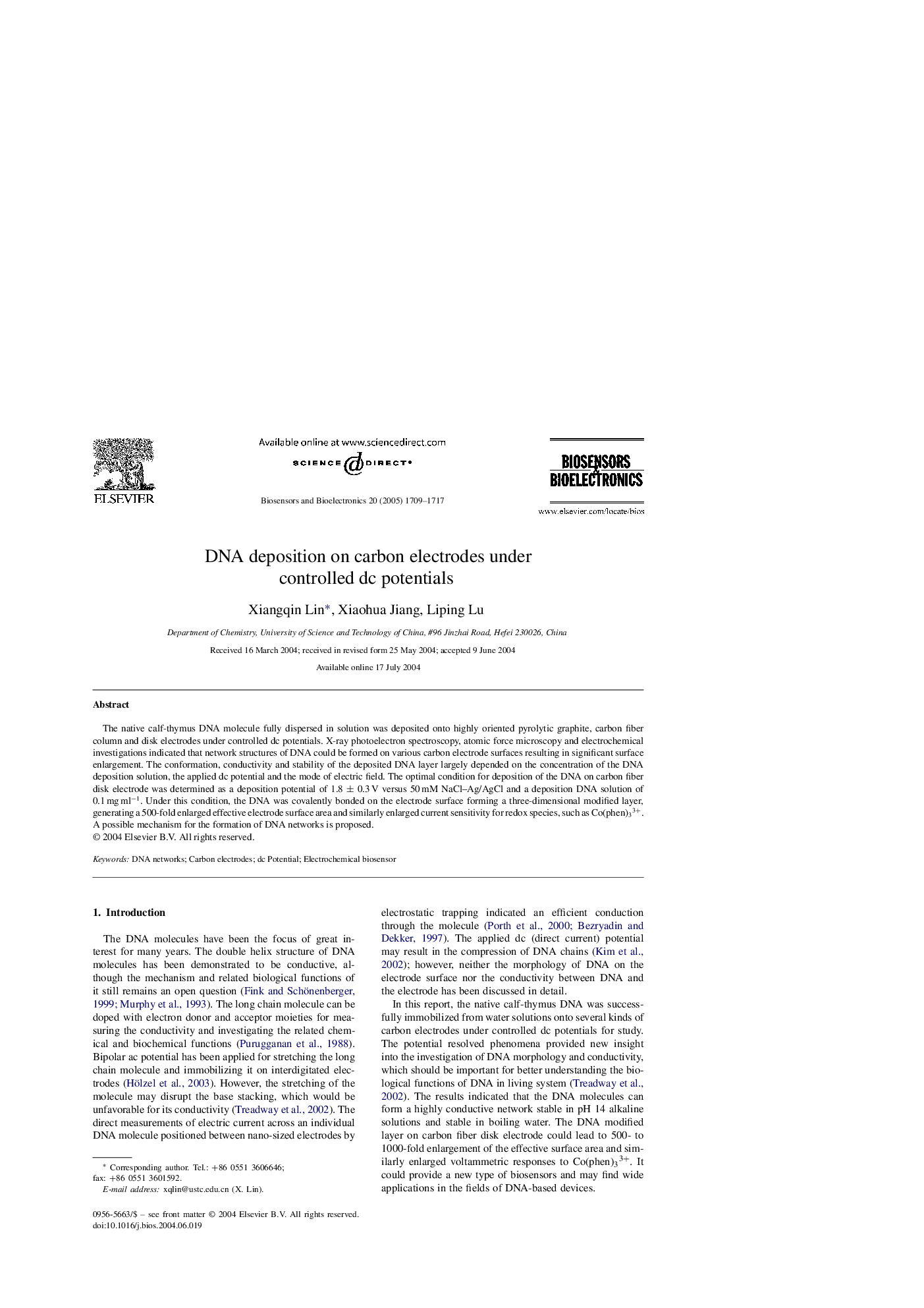| Article ID | Journal | Published Year | Pages | File Type |
|---|---|---|---|---|
| 10429770 | Biosensors and Bioelectronics | 2005 | 9 Pages |
Abstract
The native calf-thymus DNA molecule fully dispersed in solution was deposited onto highly oriented pyrolytic graphite, carbon fiber column and disk electrodes under controlled dc potentials. X-ray photoelectron spectroscopy, atomic force microscopy and electrochemical investigations indicated that network structures of DNA could be formed on various carbon electrode surfaces resulting in significant surface enlargement. The conformation, conductivity and stability of the deposited DNA layer largely depended on the concentration of the DNA deposition solution, the applied dc potential and the mode of electric field. The optimal condition for deposition of the DNA on carbon fiber disk electrode was determined as a deposition potential of 1.8 ± 0.3 V versus 50 mM NaCl-Ag/AgCl and a deposition DNA solution of 0.1 mg mlâ1. Under this condition, the DNA was covalently bonded on the electrode surface forming a three-dimensional modified layer, generating a 500-fold enlarged effective electrode surface area and similarly enlarged current sensitivity for redox species, such as Co(phen)33+. A possible mechanism for the formation of DNA networks is proposed.
Related Topics
Physical Sciences and Engineering
Chemistry
Analytical Chemistry
Authors
Xiangqin Lin, Xiaohua Jiang, Liping Lu,
